5.4 The Auditory System
“Huh? What?”
The top 10 most commonly occurring words in English are “the,” “of,” “and,” “a,” “to,” “in,” “is,” “you,” “that,” and “it” (Burch, 2000). Yet, if you listen to people conversing—

It’s remarkable that we can hear any meaningful sounds at all. The physical stimuli that reach your ears are sound waves. Sound waves are variations in pressure that travel through some substance, such as the air. Your auditory system can convert these variations in air pressure into signals that provide information about the world. The auditory system can create meaning from air pressure even when multiple sound waves occur simultaneously. So you shouldn’t always need to say, “Huh?”
183
From an evolutionary perspective, auditory perception has great advantages. The visual system is sufficient to detect friends and foes, predators and prey—
Let’s look at the types of information the auditory system delivers. Then we’ll examine the biological mechanisms that make auditory perception possible.
Auditory Perception
Preview Questions
Question
 What are the qualities of sound?
What are the qualities of sound?
Question
 How do we know where a sound is coming from?
How do we know where a sound is coming from?
Question
 What psychological processes enable you to not only hear sounds, but also recognize them?
What psychological processes enable you to not only hear sounds, but also recognize them?
When you listen, you perceive meaningful sources of sound: a friend’s hello; a fire truck’s siren; the rhythmic thump of a bass line. Yet psychologists who study perception generally focus not on the perception of specific sound sources, but on auditory qualities that accompany any source of sound (McLachlan & Wilson, 2010). We’ll look at four such qualities: loudness, pitch, timbre, and location of the sound source. Then we will examine psychological processes that enable you to identify what you’re listening to.
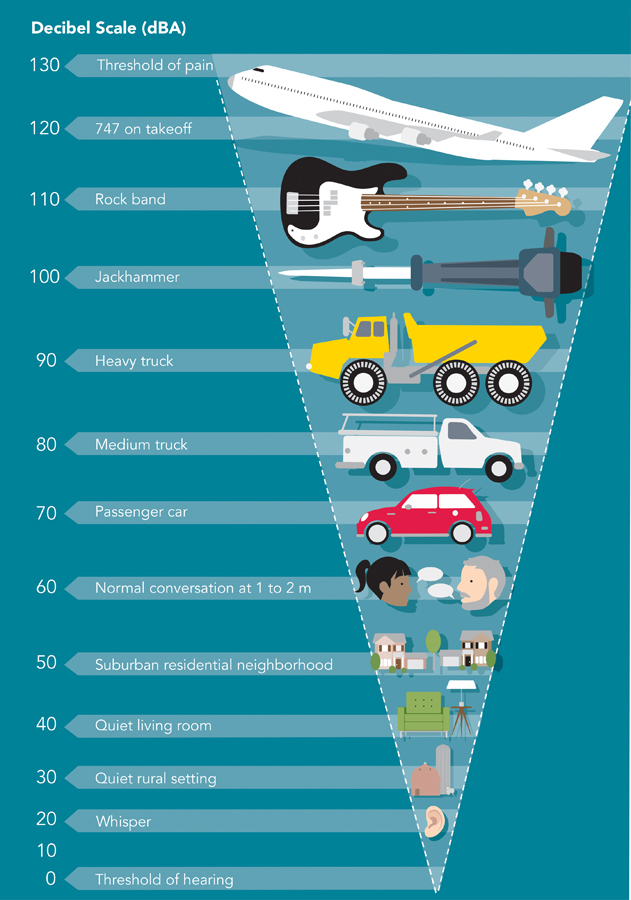
LOUDNESS. Sometimes you can hear a pin drop. Sometimes you can’t hear yourself think. Auditory experiences differ in loudness, the intensity, or strength, of an auditory experience. Loudness thus refers to something subjective: the degree to which a perceiver experiences a sound as intense (Plack & Carlyon, 1995).
Your psychological experience of loudness is determined primarily by the physical properties of sound waves. Sound waves with more physical energy are perceived as louder. Scientists measure the physical intensity of sound waves in decibels (dB); in other words, just as one measures physical length in meters, one measures the physical intensity of sound waves in decibels. Figure 5.35 shows the number of decibels associated with a range of sounds. On a decibel scale, a sound of 10 dB is 10 times louder than a 0-
Although the physical intensity of sound waves and perceptions of loudness are closely related, it is not an exact relationship. Two research findings show that physical intensity and psychological experience do not correspond precisely:
Variations in the intensity of a sound wave do not correspond to variations in perceived loudness. An increase in physical intensity of 10 dB—
that is, a 10 × increase— doubles perceived loudness (Stevens, 1955); it does not produce a 10 × increase in loudness. People experience loudness illusions. When people hear sequences of tones with different patterns of rise and fall in volume, followed by a final tone that is always of the same physical intensity, their perceptions of the loudness of the final tone differ (Jesteadt, Green, & Weir, 1978; Reinhardt-
Rutland, 1998). Because the final tones are identical, the perception that they differ is illusory.
184
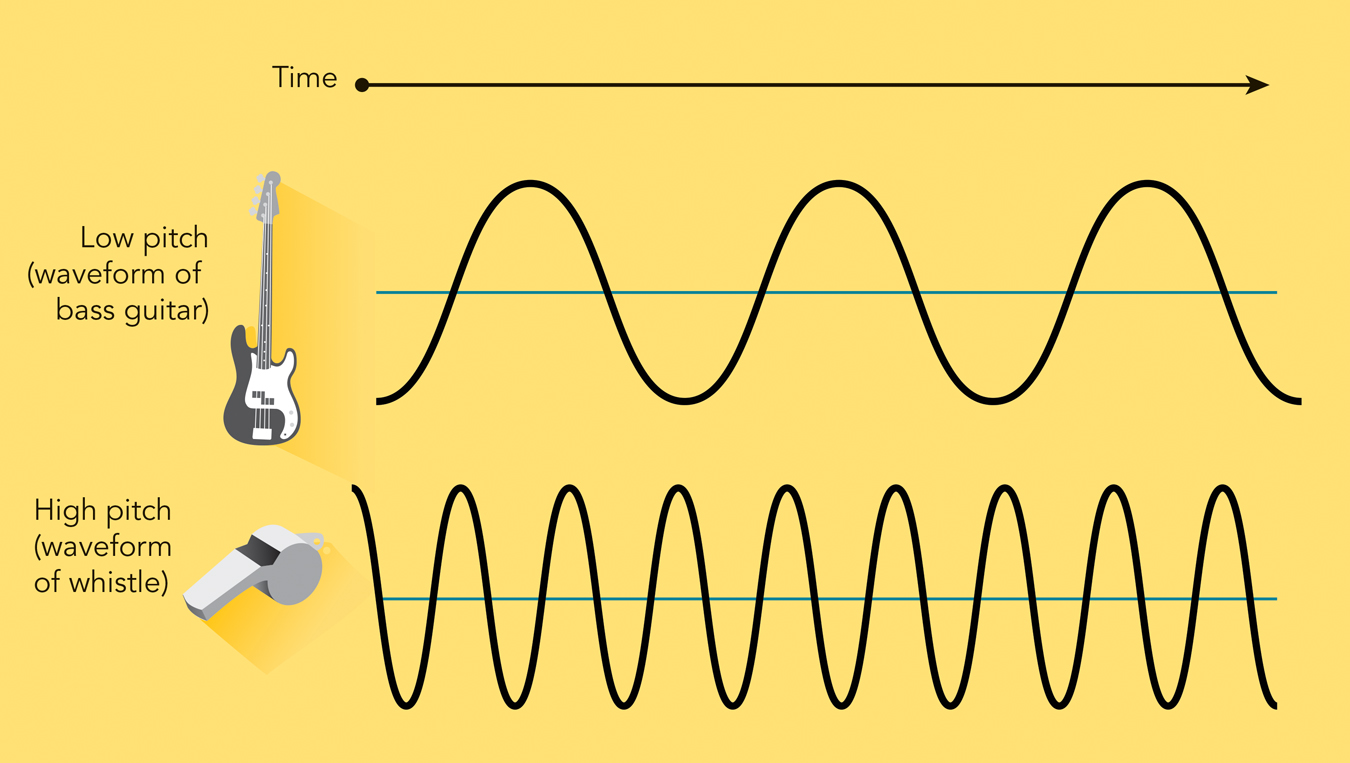
PITCH. A second property of sounds is their pitch, the sound experience that we usually describe with the words “low” and “high.” The keys on the far left of a musical keyboard produce a “low-
The physical property of sound waves that produces variations in pitch is their frequency. The frequency of a sound wave is the number of vibrations that occur during any fixed period of time. As shown in Figure 5.36, waves of higher frequency produce the perception of higher pitch.
As with loudness, pitch is a psychological experience that is not determined solely by the physical sound waves reaching the ear. A perceptual illusion again illustrates how physical stimuli and psychological experience can diverge. The psychologist Roger Shepard (1964) created a series of tones—
185

TIMBRE. A third sound quality is apparent if you compare the sound of a flute with the sound of a violin. Even when played at the same pitch and loudness, their sounds differ. You might say that the violin’s sound is “richer.”
This richness is part of the violin’s timbre (pronounced TAM-
In the everyday environment, timbre is critical to auditory perception (Menon et al., 2002). Consider your ability to recognize voices. In person and even on the phone, you can instantly recognize the voices of numerous friends and family members. The recognition is not based solely on loudness and pitch. Your phone is designed to deliver different voices at similar levels of loudness. Different friends may have voices whose pitch is similarly high or low, yet the quality of their voices—

LOCATION. An animal in its natural environment that hears a predator wonders first and foremost, “Where is it?” Organisms need to hear not only the qualities of sounds—
186
To understand auditory localization, we must distinguish between two dimensions: (1) left/right and (2) up/down. [The third dimension, distance, is determined primarily by loudness (Coleman, 1963); sounds that are less loud are perceived as more distant.] A bit of reflection on human anatomy suggests that left/right localization might be easier because your ears are on the left and right sides—
If a sound comes from your left, and then another from your right, you’ll usually be able to localize the sounds. To provide left/right information, the auditory system capitalizes on an obvious fact: Your ears are on different sides of your head. Sound waves thus travel different routes to reach one versus the other ear (Middlebrooks & Green, 1991). They travel directly to the ear on the near side, but must also make their way around your head to reach the ear on the far side. Two cues to localization result from the layout of your head and ears: timing and pressure. For a sound from your left:
Timing: The sound reaches your left ear before your right ear because it takes a small amount of time for sound waves to travel around your head to your right ear.
Pressure: The sound wave produces more pressure on your left ear than right ear because it loses pressure while traveling around your head.
CONNECTING TO MEMORY AND TO PSYCHOLOGICAL DISORDERS
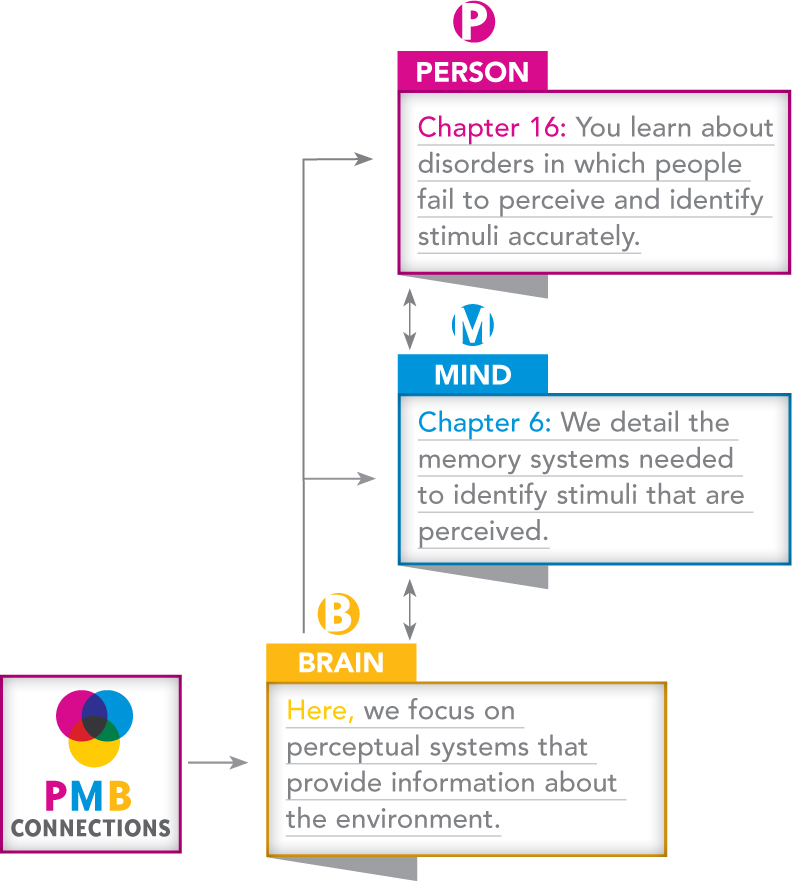
Your auditory system automatically processes and combines these cues, which makes left/right sound localization easy.
The same cues, however, can make another type of sound localization difficult: front/back localization. Suppose two identical sounds come from two locations—
What about up/down sound localization? Suppose that two sounds come from straight in front of you, one from up in the air and the other from down on the ground. It might seem impossible to distinguish them, since their timing and pressure at the two ears are identical. Yet people often can make up/down distinctions accurately (Middlebrooks & Green, 1991). How? The key factor is the shape of the ear, which affects the physical signals that make their way into your nervous system. This effect differs, depending on whether sound waves enter the ear from above or below, because your ear is not symmetrical from top to bottom; that is, the shape of the top and bottom parts of your ear do not match. Sound waves thus “bounce around” the ear in different manners, depending on whether they enter from the bottom or the top. Such differences can enable people to perceive whether a sound came from above or below.
WHAT’S MAKING THE SOUND? In addition to loudness, pitch, timbre, and location, you want to know what’s actually making the sound. Was that cry from a baby or a cat? Was the rumble thunder or an explosion? These are questions of auditory recognition, the identification of a sound’s source.
187
In general, people are quite good at auditory recognition. In one study (Gygi, Kidd, & Watson, 2004), participants heard 70 sounds ranging from A (airplane flying) to Z (a zipper). Each sound was presented for just a few seconds. Many were uncommon (e.g., the sound of a helicopter). Yet participants recognized stimuli accurately the majority of the time.
To recognize sounds, people need preexisting knowledge. Without it, recognition is impossible; if you aren’t already familiar with the Indian Purple Frog (which sounds a bit like a chicken), you won’t be able to identify it no matter how loudly it croaks. To recognize a sound, people must maintain the sound in short-
What sounds would you have difficulty identifying?
WHAT DO YOU KNOW?…
Question 8
For each of the “answers” below, provide the question. The first one has been completed for you.
Answer: This feature of sound waves determines loudness.
Question: What is intensity?- L4Wkt6qbe1wLQMu02sgK69yypevHMn8agNkJdSSrPi+Cymq0rrnSZl+o+YQRrhhiCM9pa3M9UGzb5jdP
- Qty5Pi1jHvy1wLqDLhc7mf/orokLCW35QzpZsphLz7ZsqnxMFwaEGRF9OMGSGhNtcVaugAFXlAazr9YDG1D+MuIqWhoeW1JlAGo9QFHu0S8VNfwMr2d/c+3uOLTHeLwt6sswHpYgfJqJAJIdB+r9DxZRVqo=
- N1KAPjO46v7Wi2whYT6voMnwOJQE+pWZ9jVU5705sTa75q/JwUD/svgziz1HsHnbDgS/KGqB1YkLxb7X6Rf6tt0FG2CmPJLll54u6sn/xoJ9jTOTRCWn2X7uIQTWD8ujIZrJsW4WBO/9ZtwSw3S+rHKt6TT/ocy0YeiWO7q4qu+6SpSZdq3CQE6cMiOZZj4+RpxiEitBT/EdsY3+60Ob/6R2HC7yIQPis30C0xQgPNyycX2apQQmtFuXSZE=
- qf3sgA9vsfl8rw0h3/IxYQUNDnxpXvVyDIKSXZXRYi6ecATeamJtt4wZL9kkakXqmx++mPpi1h1AtCBYFg50Nxe8mbo+2cX6/rL8rtuCW/8eYgDsXz+PWBRzX+HjZfyOezxe4m677gWeXiACalKkgqZPHYSdsrgIHwaOcA==
b. What is frequency? c. What is timbre? d. What is front/back localization? e. What is up/down localization?
From Ear to Brain: Biological Bases of Auditory Perception
Preview Question
Question
 Through what biological process are we able to convert sound waves into meaningful information?
Through what biological process are we able to convert sound waves into meaningful information?
Now let’s look at the biological machinery that makes auditory perception possible. You won’t be surprised to hear that the story begins at the ear.
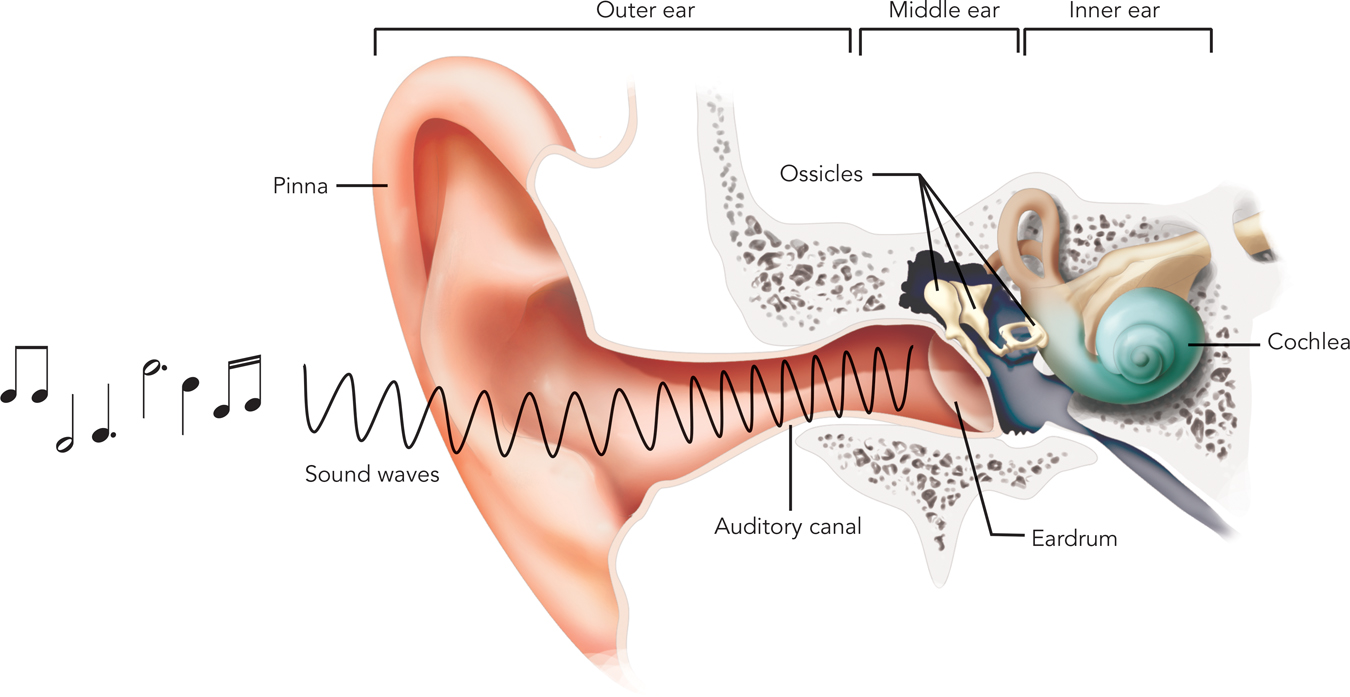
AUDITORY PROCESSING IN THE EAR. In everyday language, “ear” refers to those visible structures appended to the sides of your head. But in the study of auditory processing (Moore & Linthicum, 2004), the term ear refers to a complex biological mechanism with three overall sections: an outer ear, middle ear, and inner ear (Figure 5.37).
Sound waves first reach the pinna, the portion of outer ear that captures sound waves and directs them down the auditory canal to the eardrum. The eardrum is a thin membrane that vibrates when struck by sound waves. Sound waves of different intensity and magnitude create different patterns of vibration at the eardrum.
The eardrum’s movement activates mechanisms in the middle ear. Specifically, vibrations of the eardrum cause motion in an interconnected series of small bones in the middle ear called ossicles. Motion of the ossicles, in turn, creates activity in the inner ear, where transduction—
188

Transduction occurs within a spiral-
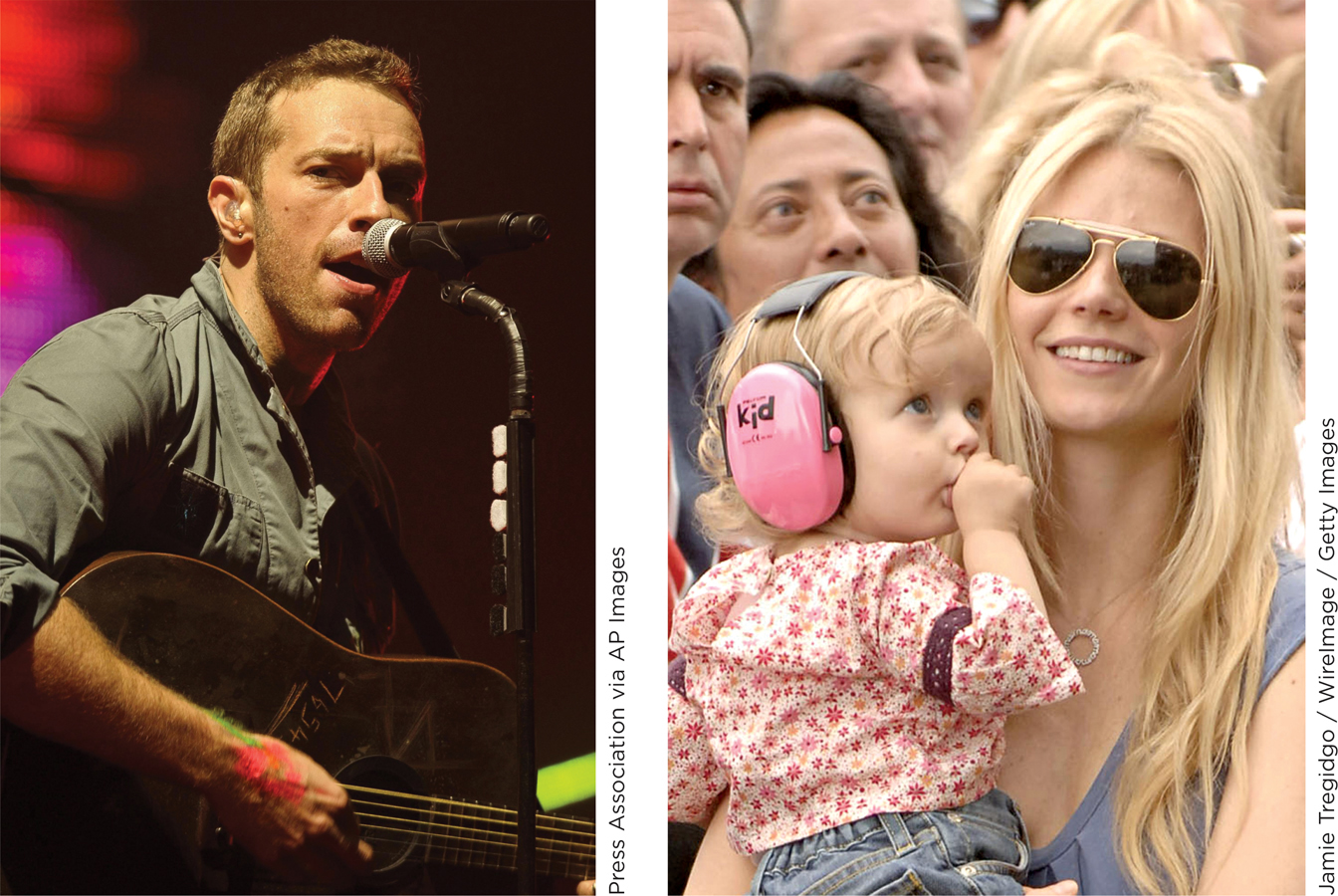
189
THE AUDITORY CORTEX. Auditory signals leave the inner ear along the auditory nerve, a bundle of thousands of nervous system cells that originates at the cochlea and carries auditory information to the brain. As with the optic nerve, there is a crossing of nerve fibers, with signals from the left ear reaching the right side of the brain, and vice versa.
The high-
The auditory cortex is therefore a substantial brain region. It contains tens of millions of neurons. Does this brain matter have any overall organization? Recall that the visual cortex is organized systematically; physical stimuli that strike neighboring areas of the retina are processed by neighboring areas of the visual cortex (Figure 5.31). The auditory cortex is similar, except that the organization is based on pitch (Wessinger et al., 1997). Sounds that are similar in pitch—
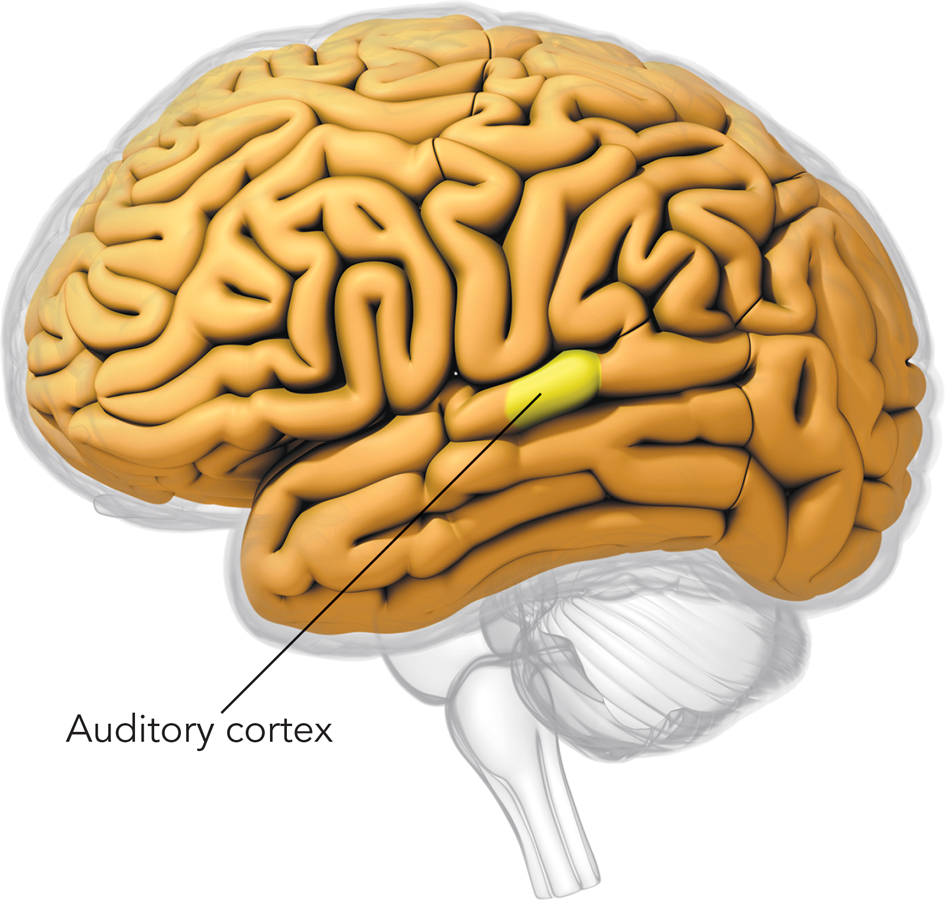
The auditory cortex deals with other information in addition to pitch. Brain-
WHAT DO YOU KNOW?…
Question 9
Like an actual drum, the Mem1lhXdGshWXrkt vibrates when struck by sound waves. These vibrations, in turn, move small bones of the inner ear called /chyh+heb/xpZQ53ag6tRg==. Transduction occurs when these vibrations cause the LJfllkMB6Ks7STQ0’s fluid to vibrate, thereby causing the wyNIHxowqsN2ZIU+ cells to move and to send neural impulses to the 3nW1p6otS+QFplrRSYV/Tw== cortex via the auditory YxDDqlRWzziPzOh+. Sounds that are similar in pitch are processed in N4K3P39xYaQIQ+CxaF1zIo9uTnjRQAfr areas of the brain.